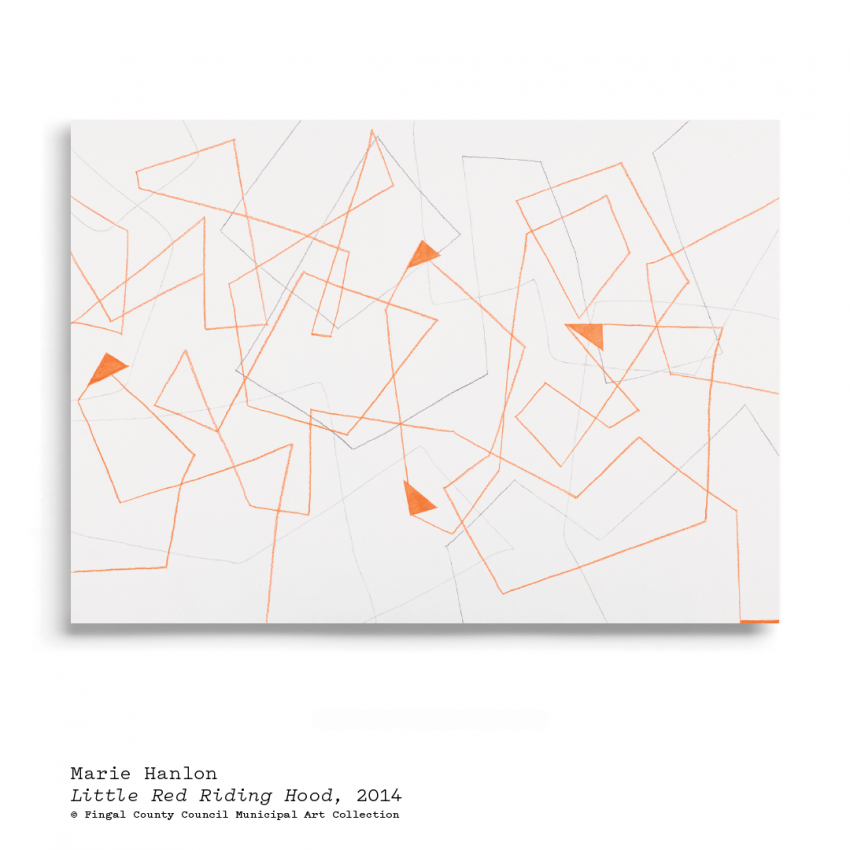
What Do You See? Let’s explore the work of Marie Hanlon
Look & respond to a selection of artworks within Fingal’s County Council’s Art Collection with artist Beth O’Halloran.
Cruinniu na nOg 2020 is here! And we’re delighted to share several educational arts activities with you to explore while you stay close to home. We invited artist Beth O’Halloran to develop text and activities inspired by three significant artworks from Fingal’s County Art Collection. Ideal for all ages and abilities, you’re invited to look, imagine, create and draw today! Let’s celebrate the arts, creativity and self-expression together.
Little Red Riding Hood by Marie Hanlon, 2014, Gouache, coloured pencils, pencil on paper.
We all know the story – Little Red Riding Hood was a little girl who went for a walk in the woods to visit her grandmother and things took a terrible turn. Looking at these lines in Marie Hanlon’s piece, we see a series of overlaps, backtracks, inter-lockings and a few coloured-in, more solid shapes. But we can’t say there is a beginning or an end, can we? When we look at an abstract image like this, but the title has a lot of meaning, it helps us peek into the thinking process the artist might have used, and in this case, let us revisit a well-known story and give it a fresh look.
What different ways can you look at this series of lines? Does it remind you of an aerial view of trails in a wood? Of busy city streets? Or maybe it could be an illustration of the way our minds work? An idea or memory pops up, we revisit it, it changes direction when we think about something else and so on. This piece offers us directions into the way we see and think – eyes darting, thoughts constantly shifting. But do you think Marie is saying something about the process? Does the drawing look like Little Red Riding Hood is lost? Frightened? Are the lines frantic? Or do they seem quite cool? How does the thickness of the lines affect their meaning? Marie says, “The paintings are like poems or pieces of music.” Can you see a structure or a rhythm to the marks she makes? What might be different if Marie hadn’t used a ruler?
Let’s loosen up of what we think of as drawing. Here's an idea for you to try!
In contemporary art, there is a much broader definition of what a drawing is. For instance, an artist might take a photograph of a jet stream or a video of a snail leaving behind a shiny trail and these can be considered drawings. For this exercise, can you make a ‘drawing’ from a handful of straws? By squeezing the tip of one straw, you can fit another in to extend it and then bend the longer straw tube into a 3-D shape similar to the twisting shape of Marie Hanlon’s piece. Things to consider: a straw drawing to map a route you often take; or as a mind map; or as a trail an animal might make.